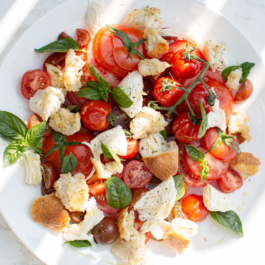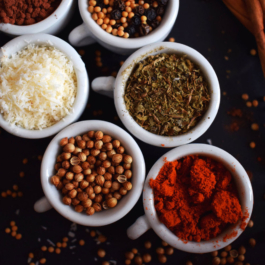Food
The Global Salad Bowl: 15 Salads From Around The World
Slide Nr 1When temperatures soar, nothing satisfies like a cool and crunchy salad. Luckily there’s more than just iceberg lettuce out there, although right about now, an iceberg sounds very refreshing. The great variety of seasonal produce available around the world has led to a fantastic assortment of traditional and creative salads, quick and easy to prepare and adaptable for all sorts of dietary preferences. If you’re a true salad aficionado, then read on for your dose of daily green.
0/10
Food
The Global Salad Bowl: 15 Salads From Around The World.
Slide Nr 2Cool As A Cucumber – Japanese cucumber salad, known as Sunomono, is quick to prepare and has a fantastic sweet and sour tanginess to it. The dressing is made of rice vinegar, sugar, soy sauce and (optionally) sesame seed oil. If you can get your hands on slender Japanese or Persian cucumbers, that’s great, but the real key is to thinly slice whatever you can find. Sunomono is normally served as an appetiser or a side dish, but you can easily use this salad as a base, and add seaweed, more veggies or protein like shrimp or crispy salmon skin. Garnish with toasted sesame seeds for an earthy pop.
1/10
Food
The Global Salad Bowl: 15 Salads From Around The World.
Slide Nr 3Vive La ‘Vinegret’ – From the Ukrainian-Russian tradition, this root vegetable-based salad may seem wintry, but when served cool, it’s crunchy, hearty and refreshing. The traditional recipe includes beets, carrots, potatoes, pickles and peas, plus red onion. A dash of dill lends it some added freshness, and the mustard vinaigrette dressing is savoury but not overpowering.
2/10
Food
The Global Salad Bowl: 15 Salads From Around The World.
Slide Nr 4Capri Cool – Insalata caprese is a quintessential starter along the Amalfi Coast and the islands just offshore. Unsurprisingly, the dish has become popular all throughout Italy, as it features four of the country’s most prized ingredients: fresh mozzarella, tomatoes, basil and olive oil. Variations exist – for example, chopped arugula and dried oregano – and some have been known to add a swirl of balsamic vinegar, but the original combination truly can’t be beat. Add a healthy drizzle of extra virgin oil, salt to taste, and buon appetito!
3/10
Food
The Global Salad Bowl: 15 Salads From Around The World.
Slide Nr 5Niçoise Très Chic! – Continuing the Mediterranean coastal cuisine trend is the beloved salade niçoise. It starts with tuna, ideally fresh, but high-quality canned works well too. The classic includes anchovies, hard-boiled eggs, marinated olives, snappy green beans, tomatoes, mesclun mixed greens and a few roasted or steamed potato slices. Substantial and savoury, yet fresh and filled with crunchy vegetables, the Niçoise is certainly a stand-in for a main meal, especially when accompanied by a heaping plate of pommes frites.
4/10
Food
The Global Salad Bowl: 15 Salads From Around The World.
Slide Nr 6Waldorful! – The Waldorf salad is the epitome of crunchy, with apples, celery, grapes and walnuts in a creamy mayonnaise-based dressing. It was named after the Waldorf Astoria New York – the hotel where it was first conceived, and which is currently undergoing a long renovation and restoration. The salad has since evolved to include all kinds of variations, including the addition of grilled chicken and other types of dried fruit, as well as yoghurt in place of mayonnaise for a lighter option.
5/10
Food
The Global Salad Bowl: 15 Salads From Around The World.
Slide Nr 7Veni, Vidi, Verde – Another hotel-born salad is the Caesar, first attributed to chef Caesar Cardini at his restaurant Caesar’s in Tijuana’s Hotel Caesar in the 1920s. (Yes, he was rightly proud of his classical name.) The romaine lettuce-based salad is traditionally tossed tableside in a creamy dressing containing Worcestershire sauce, Dijon mustard, garlic and lemon, and garnished with croutons. Anchovies were added later, but have since become an essential component of the flavour profile. The Caesar salad evolved from a staple of steakhouse side dishes to become one of the most versatile salads on restaurant menus, topped with everything from grilled chicken to shrimp or roasted salmon.
6/10
Food
The Global Salad Bowl: 15 Salads From Around The World.
Slide Nr 8It’s All Greek To Me – A virtual vacation on a plate, the Greek salad is simple, refreshing and filled with local and seasonal flavours, like feta cheese, cucumbers, tomatoes, kalamata olives and oregano. It may include green peppers and onions, but rarely leafy greens. Like many salads in the Eastern Mediterranean and Middle East, it’s more of mezze style, a combination of spoonable ingredients served as a side dish.
7/10
Food
The Global Salad Bowl: 15 Salads From Around The World.
Slide Nr 9Tantalising Tabbouleh – Israel and Lebanon are most famous for this grain-based bulgur-wheat salad, packed with chopped tomatoes, parsley, fresh mint, scallions and lemon juice. It’s spiced to taste with cinnamon, cumin and black pepper, and drizzled with olive oil. Also a mezze dish, tabbouleh is often served with whole romaine leaves meant to be topped with the chopped salad.
8/10
Food
The Global Salad Bowl: 15 Salads From Around The World.
Slide Nr 10Rainbow Bright Raw Fish Salad – Yee sang or yu sheng salad is a traditional Chinese recipe known as the “prosperity salad” or the “seven-coloured raw fish salad’ for its myriad ingredients and colourful appearance, which lend it a celebratory feeling, and is typically prepared around the Chinese New Year. Versions of it exist throughout Southeast Asia, most specifically in Malaysia and Singapore. It starts with thin strips of raw fish, most commonly salmon, and is accompanied by a variety of accoutrements like peanuts, scallions (spring onions), shaved radishes, ginger, citrus slices, carrots and cabbage, and is dressed in a refreshing whisk of vinegar and sugar. Variety is literally the spice of this salad.
9/10
Food
The Global Salad Bowl: 15 Salads From Around The World.
Slide Nr 11Cool Slaw – A classic side dish from the southern United States culinary canon, coleslaw is crunchy, satisfying and easy to adapt. The dish actually has ancient origins: Roman cookbooks describe a salad made of shredded cabbage marinated in a dressing of eggs, vinegar, herbs and spices. The dish most likely arrived in the United States with Dutch settlers, who cultivated cabbage in the fertile plains on either side of the Hudson River. The name coleslaw derives from the Dutch words kool (cabbage) and sla (lettuce). Whereas the original salad is vinegar-based, a creamier version made with Dijon mustard and mayonnaise surfaced along the way, and also includes shaved carrots. In fact, any combination of shaved crunchy vegetables will work in place of plain white cabbage. Try purple cabbage, broccoli, carrots and even bell peppers for a zesty alternative.
10/10
















Sorry, the comment form is closed at this time.